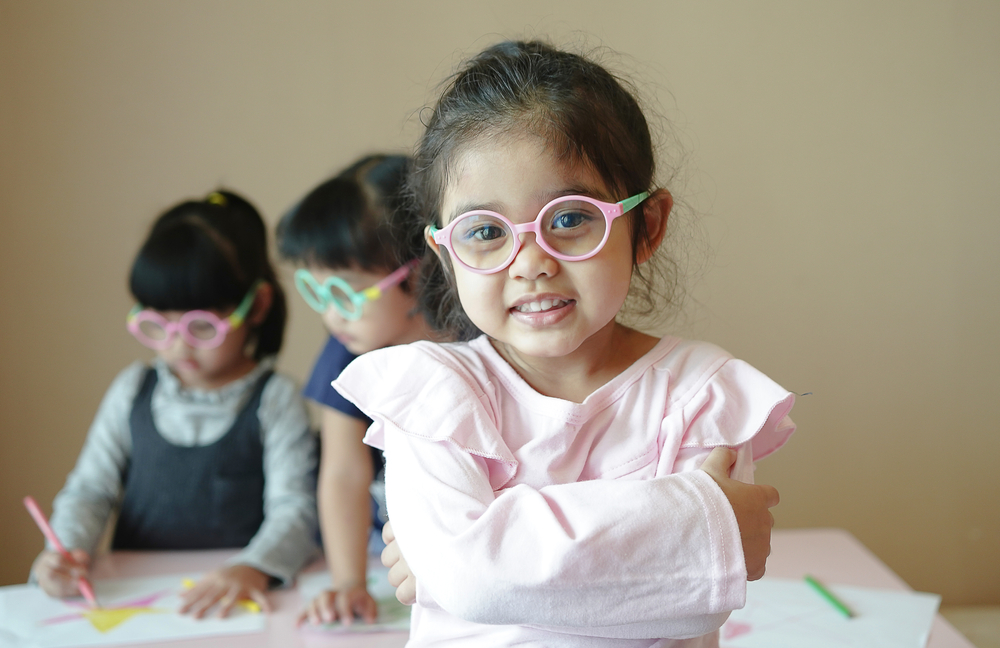
In today’s digital age, more children are developing myopia, or nearsightedness, at an earlier age. This condition affects their ability to see distant objects clearly, which can impact their learning, athletic performance, and daily activities. While traditional glasses and contact lenses correct vision, they do not slow the progression of myopia. Without intervention, myopia can continue to worsen, increasing the risk of serious eye conditions later in life. Understanding the importance of early detection and available treatment options can make a significant difference in your child’s vision.
Understanding Myopia
Myopia is a refractive error where light entering the eye focuses in front of the retina instead of directly on it. This leads to blurry distance vision while near objects remain clear. Myopia typically develops in childhood and progresses as a child grows, particularly between ages 6 and 17. Genetics, environmental factors such as excessive screen time, and limited outdoor activity all contribute to its development.
Why Regular Pediatric Eye Exams Matter
Routine eye exams play a vital role in detecting myopia early. Many children do not realize they have vision problems, and parents may not notice subtle signs such as squinting, difficulty seeing the board at school, or frequent headaches. Regular pediatric eye exams allow optometrists to diagnose myopia before it worsens and implement early intervention strategies to help slow its progression.
What Is Myopia Management and Why Is It Important?
Myopia management is a proactive approach to slowing the progression of nearsightedness. If left untreated, myopia can continue to worsen, increasing the risk of serious eye conditions later in life, including:
Retinal detachment
Glaucoma
Cataracts
Myopic maculopathy
Starting myopia management early offers the best opportunity to slow its progression and protect your child’s long-term vision. By addressing myopia proactively, children can reduce their risk of developing serious eye diseases in adulthood and maintain better visual clarity for daily activities.
Myopia Management Strategies
There are several effective myopia management options, each designed to slow myopia progression and protect vision. Orthokeratology (Ortho-K) involves specially designed rigid gas-permeable contact lenses worn overnight. These lenses gently reshape the cornea while the child sleeps, providing clear vision during the day without the need for glasses or contacts. Ortho-K has been shown to slow myopia progression in children significantly.
Low-dose atropine eye drops are another effective treatment for myopia management. When applied nightly, these drops help slow the elongation of the eye, which is a key factor in myopia progression. They are often used in combination with other strategies for optimal results.
Multifocal contact lenses have also been adapted to help manage myopia in children. These lenses feature specialized optical designs that provide different zones of focus, helping to reduce eye strain and slow myopia progression. By altering how light enters the eye, multifocal lenses can help control the way the eye grows, which is a key factor in myopia management. They offer a comfortable, non-invasive option for children who are active or prefer an alternative to glasses.
Schedule Your Child’s Eye Exam with Eyecare at the Cove Optometry Today
Myopia is more than just a need for stronger glasses—it’s a progressive condition that can impact your child’s long-term eye health. By detecting and managing myopia early, you can help slow its progression and reduce the risk of future vision complications. With options like Ortho-K, atropine eye drops, and multifocal contact lenses, myopia management provides effective solutions to protect your child’s sight.
Schedule an eye exam with Eyecare at the Cove Optometry for a personalized myopia management plan tailored to your child’s unique needs. Visit our office in La Jolla, California, or call (858) 283-3600 to book an appointment today.






